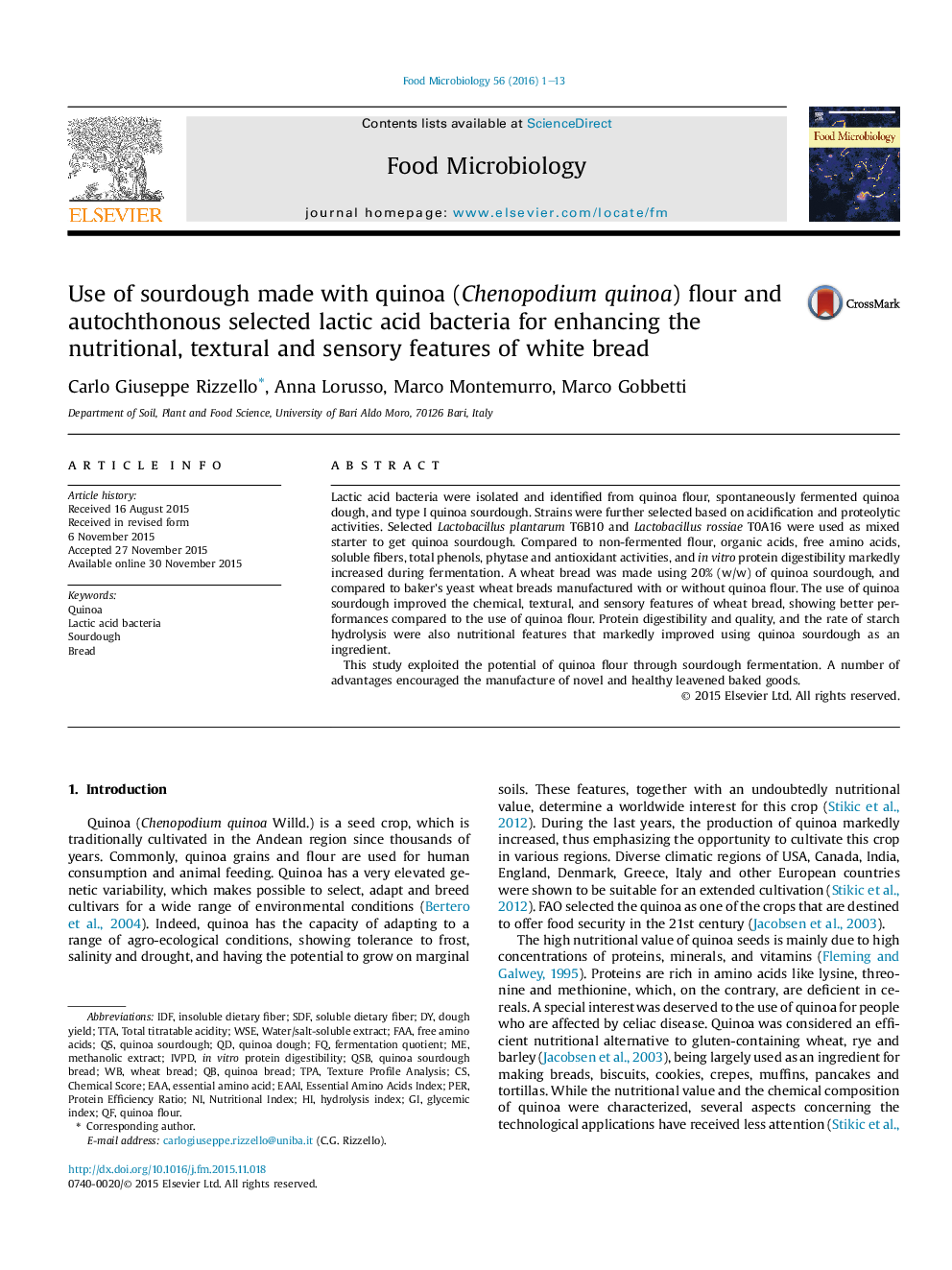| Article ID | Journal | Published Year | Pages | File Type |
|---|---|---|---|---|
| 4362647 | Food Microbiology | 2016 | 13 Pages |
•Lactic acid bacteria were isolated from quinoa flour and spontaneously fermented doughs.•strains were selected based on acidification and proteolytic activities.•a quinoa sourdough made with the selected strains was characterized.•sourdough fermentation caused the improvement of the nutritional profile.•a wheat bread including quinoa sourdough was made and characterized.
Lactic acid bacteria were isolated and identified from quinoa flour, spontaneously fermented quinoa dough, and type I quinoa sourdough. Strains were further selected based on acidification and proteolytic activities. Selected Lactobacillus plantarum T6B10 and Lactobacillus rossiae T0A16 were used as mixed starter to get quinoa sourdough. Compared to non-fermented flour, organic acids, free amino acids, soluble fibers, total phenols, phytase and antioxidant activities, and in vitro protein digestibility markedly increased during fermentation. A wheat bread was made using 20% (w/w) of quinoa sourdough, and compared to baker's yeast wheat breads manufactured with or without quinoa flour. The use of quinoa sourdough improved the chemical, textural, and sensory features of wheat bread, showing better performances compared to the use of quinoa flour. Protein digestibility and quality, and the rate of starch hydrolysis were also nutritional features that markedly improved using quinoa sourdough as an ingredient.This study exploited the potential of quinoa flour through sourdough fermentation. A number of advantages encouraged the manufacture of novel and healthy leavened baked goods.
